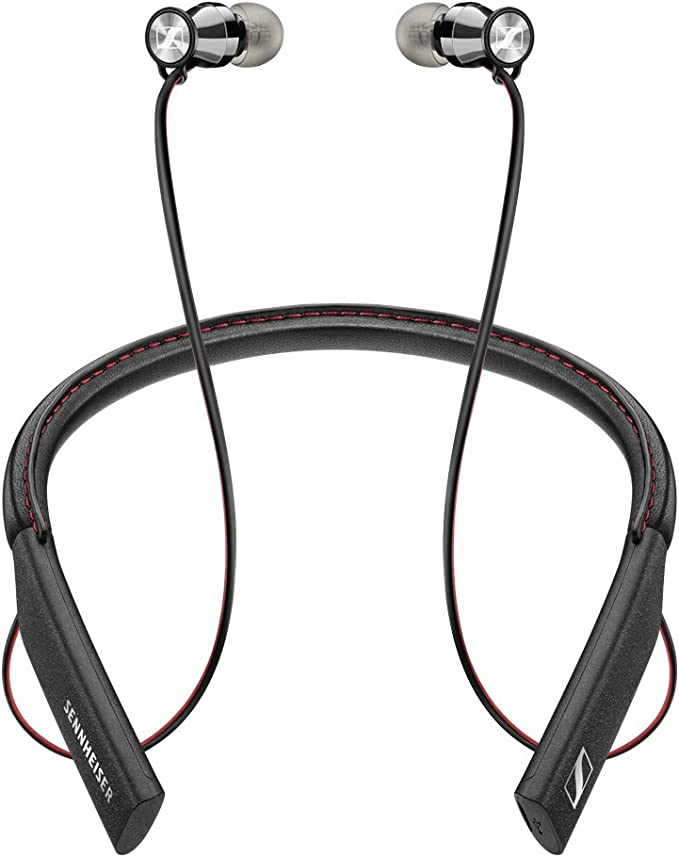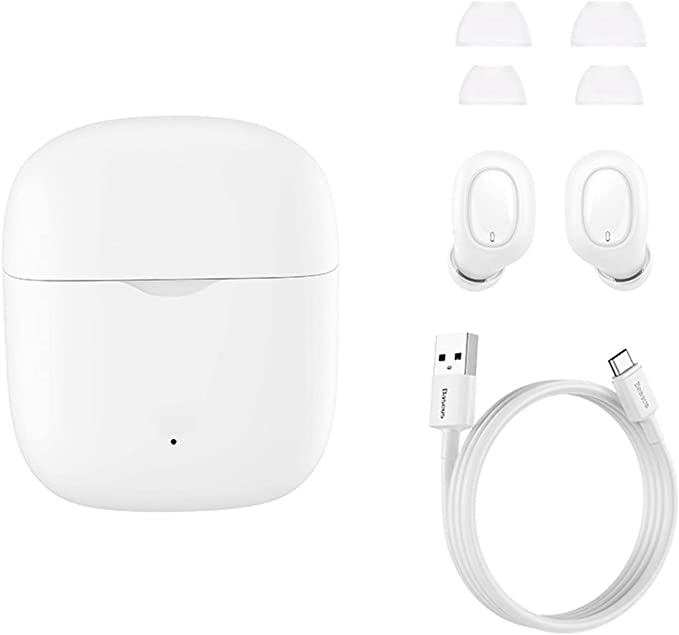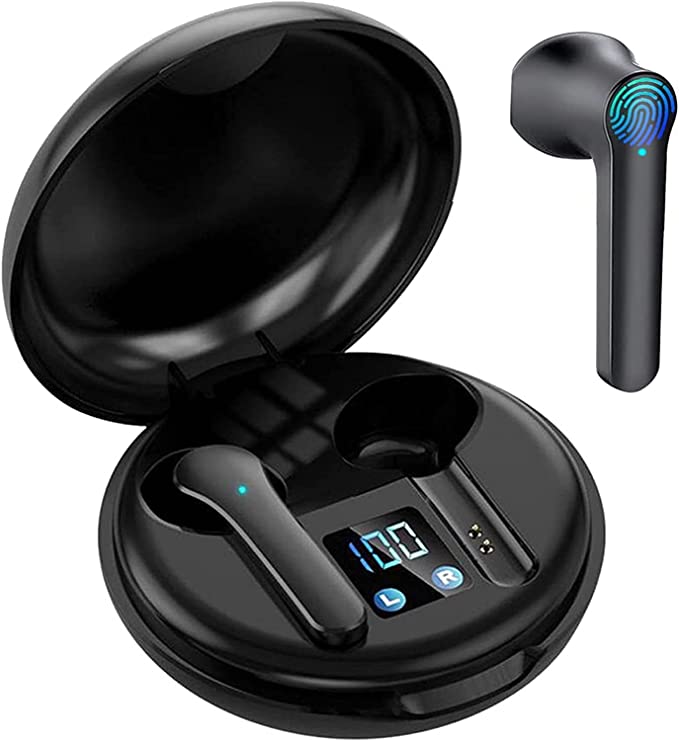Bluesound Pulse SOUNDBAR+ (Pulse+BLK): Immersive Sound for Your Home Theater
Update on March 15, 2025, 8:11 a.m.
We’ve all been there. You’re settled in for a movie night, ready to be transported to another world. The visuals on your stunning new 4K TV are breathtaking, but the sound…it’s just there. It lacks depth, detail, and that crucial element of immersion that truly makes you feel like you’re in the scene. The built-in speakers of even the most advanced televisions are often an afterthought, constrained by the slim design of modern displays. They simply can’t deliver the sonic impact that today’s movies, games, and music deserve.
This is the fundamental problem that soundbars aim to solve, and the Bluesound Pulse SOUNDBAR+ tackles it with a sophisticated blend of cutting-edge technology and audiophile-grade engineering. But it’s more than just a louder speaker; it’s a portal to a richer, more engaging, and truly immersive audio experience.

Beyond Stereo: Understanding Immersive Audio
For decades, “surround sound” meant a collection of speakers strategically placed around your room – front left, center, front right, and a couple in the back. While this was a significant improvement over simple stereo, it still presented a relatively two-dimensional soundscape. Sounds came from specific directions, but there wasn’t a true sense of height or of sound objects moving freely within the space.
Immersive audio, and specifically technologies like Dolby Atmos, change the game entirely. Instead of being limited to channels, immersive audio treats sounds as individual “objects.” These objects can be precisely positioned anywhere within a three-dimensional space – in front of you, behind you, beside you, and even above you.
Dolby Atmos: Sound from Above (and Everywhere Else)
Dolby Atmos is the key to unlocking this three-dimensional soundscape. Think of it this way: in a traditional 5.1 surround sound setup, a helicopter flying overhead would be simulated by a combination of the front and rear speakers. With Dolby Atmos, that helicopter becomes a distinct audio object, and the soundbar (or a full Atmos system) can render its position with remarkable accuracy. You don’t just hear it in front of you and then behind you; you hear it moving overhead, creating a far more realistic and believable sonic environment.
The magic of Dolby Atmos lies in its metadata. This metadata, embedded within the audio track, tells the soundbar (or receiver) precisely where each sound object should be placed in the 3D space. The soundbar then uses sophisticated algorithms and its carefully positioned drivers to recreate that placement as accurately as possible. The Bluesound Pulse SOUNDBAR+ achieves this through a virtual Dolby Atmos implementation. This means it doesn’t require dedicated upward-firing speakers to create the height dimension; instead, it uses clever digital signal processing (DSP) to simulate the effect of overhead sound.

Introducing the Bluesound Pulse SOUNDBAR+
The Bluesound Pulse SOUNDBAR+ isn’t just about technology; it’s also about design. Its sleek, minimalist aesthetic, available in black or white, is designed to complement any modern living room. It’s substantial without being bulky, and its build quality reflects its premium positioning. But the real beauty lies beneath the surface.
BluOS: The Brains of the Operation
At the heart of the Pulse SOUNDBAR+ is BluOS, Bluesound’s proprietary multi-room music streaming platform. BluOS is far more than just a remote control app; it’s a sophisticated operating system for your entire audio ecosystem.
Here’s what makes BluOS stand out:
- High-Resolution Audio Support: BluOS is built for audiophiles. It supports high-resolution audio files up to 24-bit/192kHz, far exceeding the quality of standard MP3s or even CD-quality audio. This means you can hear your music with incredible detail and clarity, just as the artists intended.
- Multi-Room Capability: BluOS allows you to connect multiple Bluesound devices throughout your home, creating a synchronized audio experience. You can play the same music in every room, or different music in different rooms, all controlled from the intuitive BluOS app.
- Streaming Service Integration: BluOS seamlessly integrates with a wide range of popular streaming services, including Tidal, Spotify, Qobuz, Deezer, and more. You can access your favorite playlists and discover new music directly within the app.
- Local Music Library Support: You can also stream music from your own personal music library, stored on a computer or network-attached storage (NAS) drive.
- Intuitive interface and easy control: The app offer simple navigation, making it easy to set up, and manage.
Connectivity: HDMI eARC and aptX HD Explained
Getting the best possible sound quality requires a high-quality connection between your TV and your soundbar. The Pulse SOUNDBAR+ offers two key technologies for this: HDMI eARC and aptX HD Bluetooth.
-
HDMI eARC (enhanced Audio Return Channel): eARC is the latest iteration of HDMI’s Audio Return Channel technology. The “enhanced” part is crucial. Traditional ARC could transmit compressed audio formats, but it often struggled with the higher bandwidth requirements of lossless audio and Dolby Atmos. eARC solves this problem, providing enough bandwidth to handle even the most demanding audio formats, including Dolby Atmos and DTS:X. This ensures that you’re getting the full, uncompressed audio signal from your TV to your soundbar. Simply connect an HDMI cable from the eARC port on your TV to the eARC port on the Pulse SOUNDBAR+. Your TV’s remote can then control the volume.
-
aptX HD Bluetooth: While HDMI eARC is ideal for connecting to your TV, Bluetooth is perfect for quickly streaming music from your smartphone or tablet. The Pulse SOUNDBAR+ supports aptX HD, an advanced Bluetooth codec that delivers significantly improved audio quality compared to standard Bluetooth. aptX HD supports 24-bit audio and reduces distortion, resulting in a cleaner, more detailed wireless listening experience.

Inside the Soundbar: Drivers and Digital Signal Processing
The Pulse SOUNDBAR+ doesn’t rely on magic to create its impressive sound; it relies on carefully engineered hardware and sophisticated software.
-
Eight Class D Amplified Drivers: The soundbar houses eight individual drivers, each powered by its own dedicated Class D amplifier. Class D amplifiers are known for their high efficiency and low distortion, meaning they can deliver plenty of power without generating excessive heat or sacrificing sound quality. These drivers are custom-tuned for specific frequency ranges, ensuring a balanced and detailed sound across the entire spectrum.
-
Digital Signal Processing (DSP): The DSP is the unsung hero of the Pulse SOUNDBAR+. It’s a powerful computer chip that performs a variety of tasks, including:
- Virtual Dolby Atmos Processing: As mentioned earlier, the DSP is responsible for creating the virtual height effects of Dolby Atmos.
- Crossover Management: The DSP ensures that each driver receives the correct frequencies, optimizing its performance.
- Equalization: The DSP allows you to fine-tune the sound to your preferences, adjusting bass, treble, and other parameters.
- Dynamic Range Control: The DSP can help to balance the volume levels between quiet and loud passages, making dialogue easier to hear without being overwhelmed by explosions.
The combination of high-quality drivers and sophisticated DSP allows the Pulse SOUNDBAR+ to create a surprisingly wide and immersive soundstage, even without dedicated surround speakers.
Building a Wireless Home Theater
While the Pulse SOUNDBAR+ delivers excellent performance on its own, it’s also designed to be the foundation of a complete wireless home theater system.
-
Adding a Subwoofer: For truly cinematic bass, you can wirelessly connect the Bluesound PULSE SUB+. This dedicated subwoofer takes over the low-frequency duties, adding depth and impact to explosions, music, and other sound effects. The connection is seamless and wireless, eliminating the need for messy cables.
-
Adding Surround Speakers: For a full surround sound experience, you can add a pair of Bluesound PULSE FLEX 2i speakers as rear channels. These compact speakers provide the discrete rear audio channels, further enhancing the sense of immersion. Again, the connection is wireless, making setup a breeze.
The BluOS app makes it incredibly easy to configure and control your expanded system, ensuring perfect synchronization and optimal sound quality.

Sound in Practice: Movies, Music, and Games
The true test of any soundbar is how it performs in real-world scenarios. The Pulse SOUNDBAR+ excels across a variety of content:
- Movies: Dolby Atmos content truly shines, with sounds appearing to come from all around you. Dialogue is clear and crisp, even during action-packed scenes. The soundstage is wide and enveloping, drawing you into the movie.
-
Music: The Pulse SOUNDBAR+ isn’t just for movies; it’s a superb music system in its own right. Thanks to its high-resolution audio support and carefully tuned drivers, music sounds detailed, dynamic, and engaging. Whether you’re streaming from Tidal, Spotify, or your own local library, you’ll appreciate the clarity and precision of the sound. The wide soundstage creates a sense of spaciousness, making it feel like you’re listening to a live performance. The BluOS app makes it easy to browse your music collection and create playlists.
-
Games: The immersive soundstage created by the Pulse SOUNDBAR+ adds a new dimension to gaming. You’ll hear the subtle details of the environment around you, from the rustling of leaves to the footsteps of approaching enemies. The precise positioning of sounds helps you pinpoint their location, giving you a competitive edge.
The Soundbar Landscape: A Competitive Look
The soundbar market is crowded, with major players like Sonos, Bose, and Samsung offering competing products. While a detailed comparison of every model is beyond the scope of this article, it’s worth noting where the Pulse SOUNDBAR+ stands.
-
Sonos Arc: The Sonos Arc is a popular choice, known for its sleek design and ease of use. It also supports Dolby Atmos and offers a similar virtual surround sound experience. However, the Pulse SOUNDBAR+ generally receives higher marks for its musicality and its BluOS platform, which many consider superior to Sonos’s app in terms of features and high-resolution audio support. The Arc relies more heavily on its “Trueplay” tuning software, which some users find less effective than manual EQ adjustments.
-
Bose Smart Soundbar 900: The Bose Smart Soundbar 900 is another strong contender, offering excellent sound quality and a sophisticated design. It also supports Dolby Atmos and has built-in voice assistants. The Pulse SOUNDBAR+, however, offers greater flexibility in terms of connectivity (with its analog input) and subwoofer options (allowing the use of any third-party wired subwoofer). The BluOS ecosystem is again a differentiating factor.
The Pulse SOUNDBAR+ often finds itself appealing to users who prioritize audio quality and flexibility, while Sonos and Bose may appeal more to users who prioritize simplicity and ecosystem lock-in. The ability to connect any wired subwoofer gives Bluesound a unique edge, particularly for users who already own a high-quality subwoofer.
Placement Considerations for Optimal Performance
To get the most out of the Pulse SOUNDBAR+, proper placement is essential. Ideally, it should be positioned directly below your TV, at or slightly below ear level when seated. Avoid placing any obstructions between the soundbar and your listening position, as this can interfere with the sound waves and diminish the immersive effect.
Because the Pulse SOUNDBAR+ uses virtual Dolby Atmos, you don’t need to worry about specific ceiling heights or room dimensions. The DSP algorithms are designed to adapt to a variety of environments. However, a room with some soft furnishings (carpets, curtains, etc.) will generally sound better than a room with lots of hard, reflective surfaces.
The Future of Home Theater Audio
The Bluesound Pulse SOUNDBAR+ represents a significant step forward in home theater audio, but the technology continues to evolve. We can expect to see even more sophisticated DSP algorithms that further enhance the realism of virtual surround sound. Wireless audio transmission will likely become even more robust and reliable, with higher bandwidths and lower latency. And the integration of soundbars with other smart home devices will become increasingly seamless, allowing for even greater control and customization.
The trend towards immersive audio is only going to accelerate. As more and more content is created with Dolby Atmos and other immersive formats, the demand for soundbars that can accurately reproduce these experiences will continue to grow. The focus is shifting from simply having more speakers to having smarter speakers that can create a truly believable and engaging soundstage.
Conclusion: Elevate Your Listening Experience
The Bluesound Pulse SOUNDBAR+ is more than just a way to make your TV louder; it’s a gateway to a richer, more immersive, and more emotionally engaging home entertainment experience. It combines cutting-edge technology, audiophile-grade components, and a user-friendly platform to deliver exceptional sound quality for movies, music, and games. If you’re looking to elevate your listening experience and truly unlock the potential of your home theater, the Pulse SOUNDBAR+ is a compelling choice. It’s an investment in sound, and an investment in a more captivating way to experience the content you love.



























































